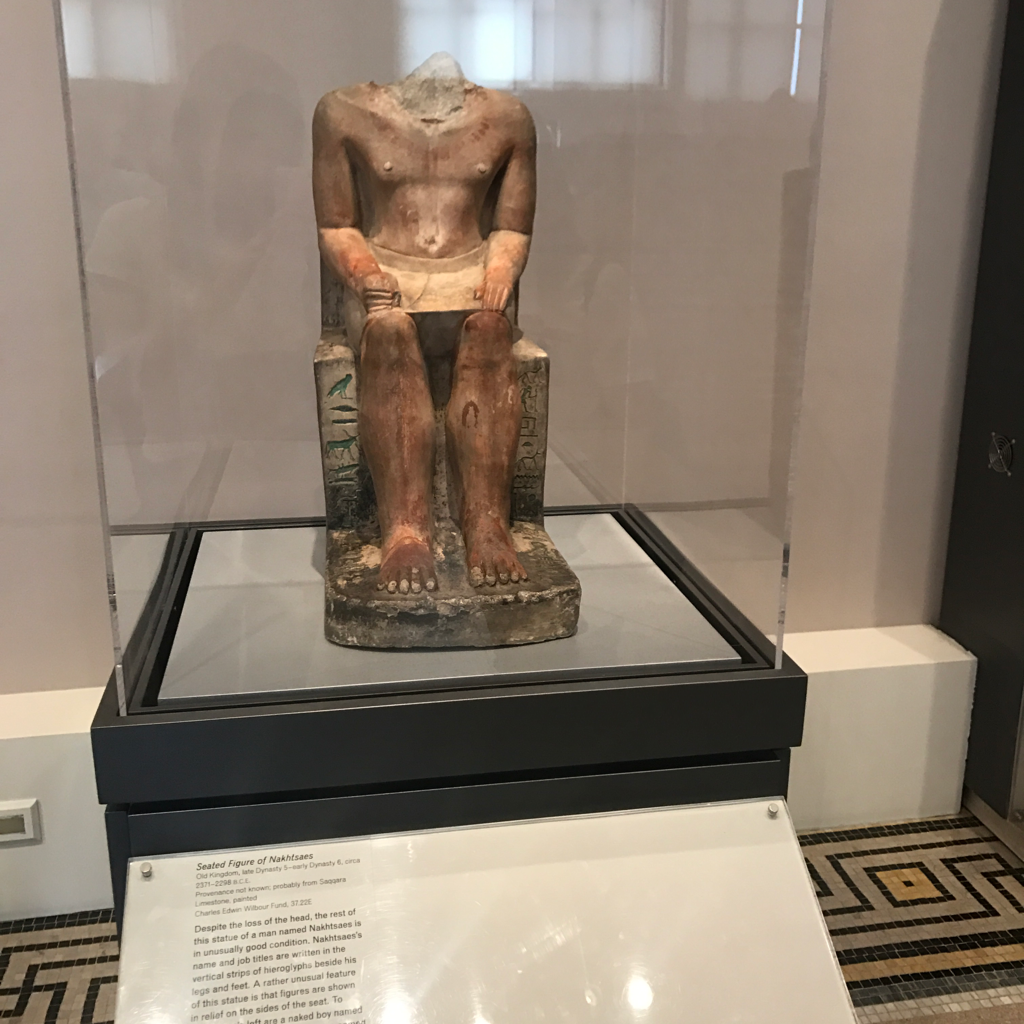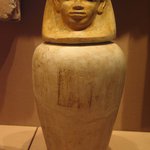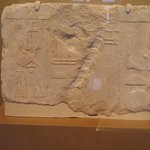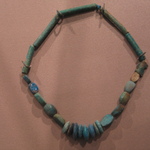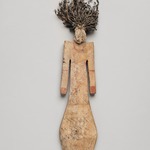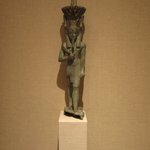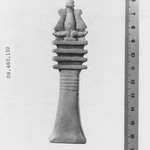

Seated Statue of Nakhtsaes, ca. 2371–2298 B.C.E. Limestone, pigment, 24 1/2 x 10 1/4 x 16 3/4 in. (62.2 x 26 x 42.5 cm). Brooklyn Museum, Charles Edwin Wilbour Fund, 37.22E. Creative Commons-BY (Photo: Brooklyn Museum, 37.22E_front_PS1.jpg)

Seated Statue of Nakhtsaes, ca. 2371–2298 B.C.E. Limestone, pigment, 24 1/2 x 10 1/4 x 16 3/4 in. (62.2 x 26 x 42.5 cm). Brooklyn Museum, Charles Edwin Wilbour Fund, 37.22E. Creative Commons-BY (Photo: Brooklyn Museum, 37.22E_threequarter_PS1.jpg)
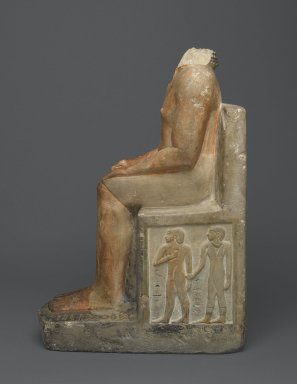
Seated Statue of Nakhtsaes, ca. 2371–2298 B.C.E. Limestone, pigment, 24 1/2 x 10 1/4 x 16 3/4 in. (62.2 x 26 x 42.5 cm). Brooklyn Museum, Charles Edwin Wilbour Fund, 37.22E. Creative Commons-BY (Photo: Brooklyn Museum, 37.22E_profile_PS1.jpg)

Seated Statue of Nakhtsaes, ca. 2371–2298 B.C.E. Limestone, pigment, 24 1/2 x 10 1/4 x 16 3/4 in. (62.2 x 26 x 42.5 cm). Brooklyn Museum, Charles Edwin Wilbour Fund, 37.22E. Creative Commons-BY (Photo: Brooklyn Museum, 37.22E_back_PS1.jpg)

Seated Statue of Nakhtsaes, ca. 2371–2298 B.C.E. Limestone, pigment, 24 1/2 x 10 1/4 x 16 3/4 in. (62.2 x 26 x 42.5 cm). Brooklyn Museum, Charles Edwin Wilbour Fund, 37.22E. Creative Commons-BY (Photo: Brooklyn Museum, 37.22e_threequarter_left.jpg)

Seated Statue of Nakhtsaes, ca. 2371–2298 B.C.E. Limestone, pigment, 24 1/2 x 10 1/4 x 16 3/4 in. (62.2 x 26 x 42.5 cm). Brooklyn Museum, Charles Edwin Wilbour Fund, 37.22E. Creative Commons-BY (Photo: Brooklyn Museum, 37.22e_front.jpg)

Seated Statue of Nakhtsaes, ca. 2371–2298 B.C.E. Limestone, pigment, 24 1/2 x 10 1/4 x 16 3/4 in. (62.2 x 26 x 42.5 cm). Brooklyn Museum, Charles Edwin Wilbour Fund, 37.22E. Creative Commons-BY (Photo: Brooklyn Museum, 37.22e_profile_right.jpg)

Seated Statue of Nakhtsaes, ca. 2371–2298 B.C.E. Limestone, pigment, 24 1/2 x 10 1/4 x 16 3/4 in. (62.2 x 26 x 42.5 cm). Brooklyn Museum, Charles Edwin Wilbour Fund, 37.22E. Creative Commons-BY (Photo: Brooklyn Museum, 37.22e_back.jpg)

Seated Statue of Nakhtsaes, ca. 2371–2298 B.C.E. Limestone, pigment, 24 1/2 x 10 1/4 x 16 3/4 in. (62.2 x 26 x 42.5 cm). Brooklyn Museum, Charles Edwin Wilbour Fund, 37.22E. Creative Commons-BY (Photo: Brooklyn Museum, 37.22e_detail_left.jpg)
Seated Statue of Nakhtsaes
Egyptian, Classical, Ancient Near Eastern Art
On View: Old Kingdom to 18th Dynasty, Egyptian Galleries, 3rd Floor







